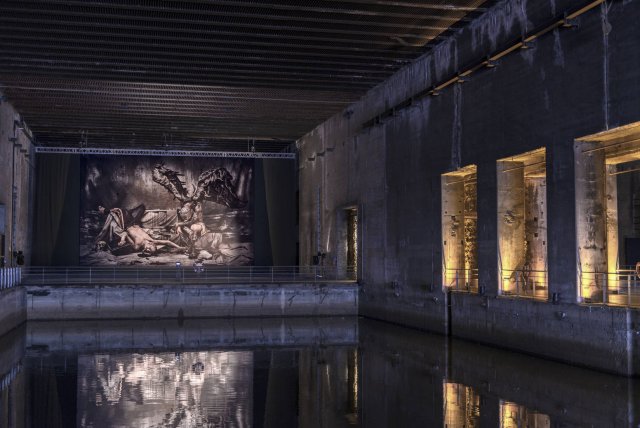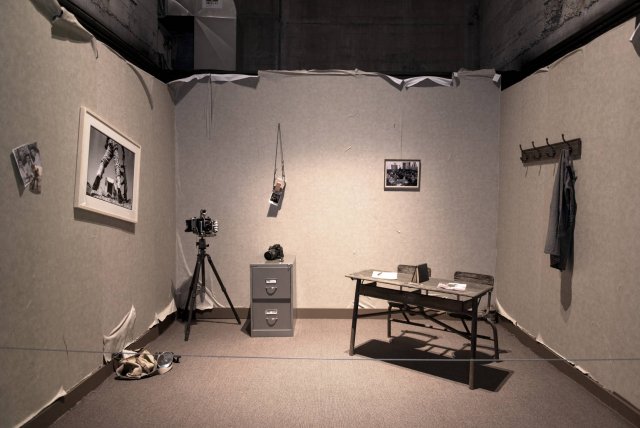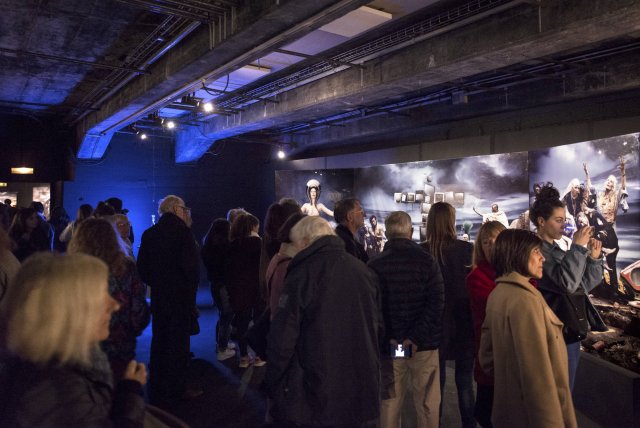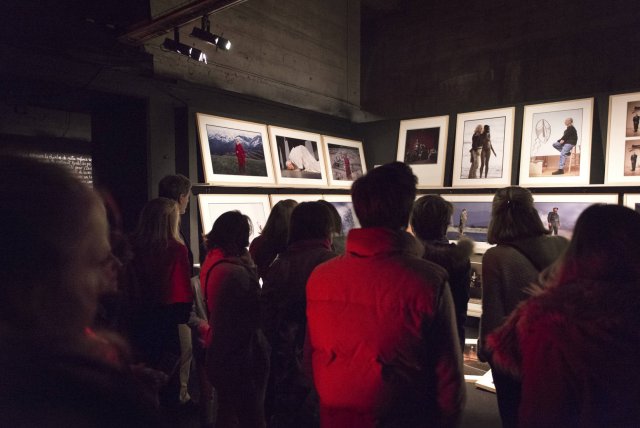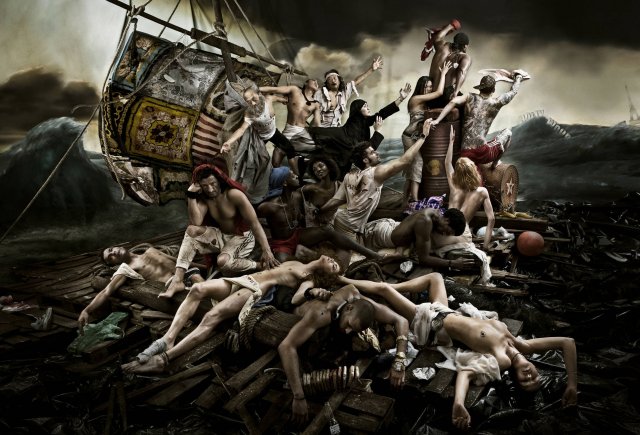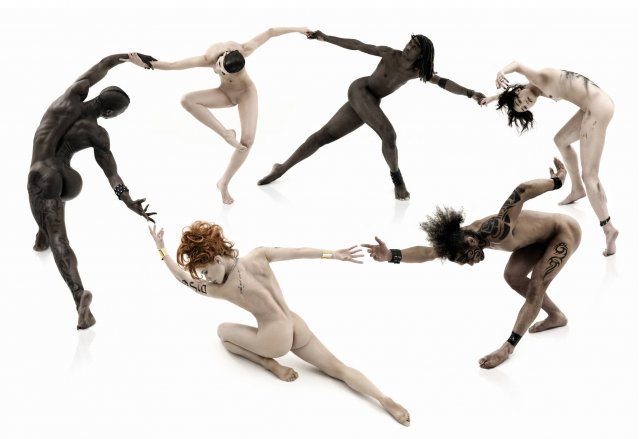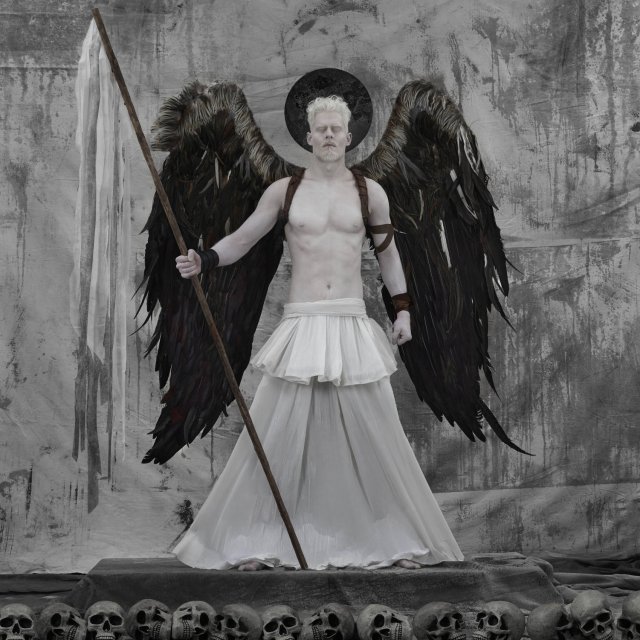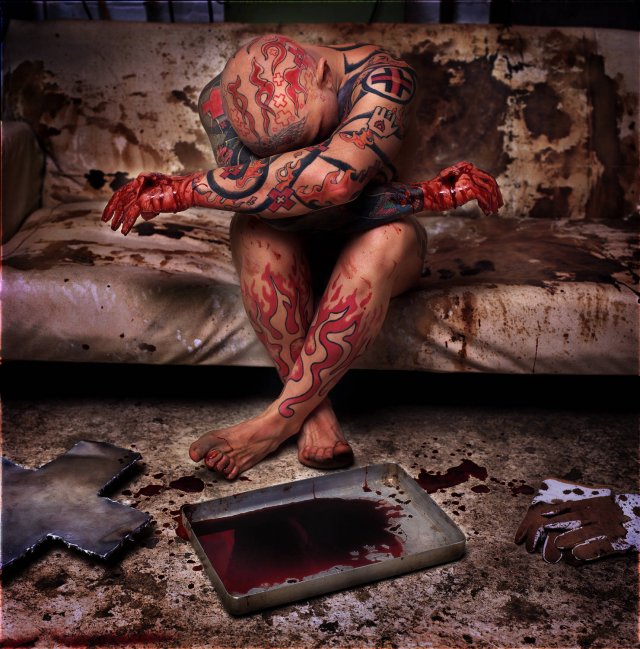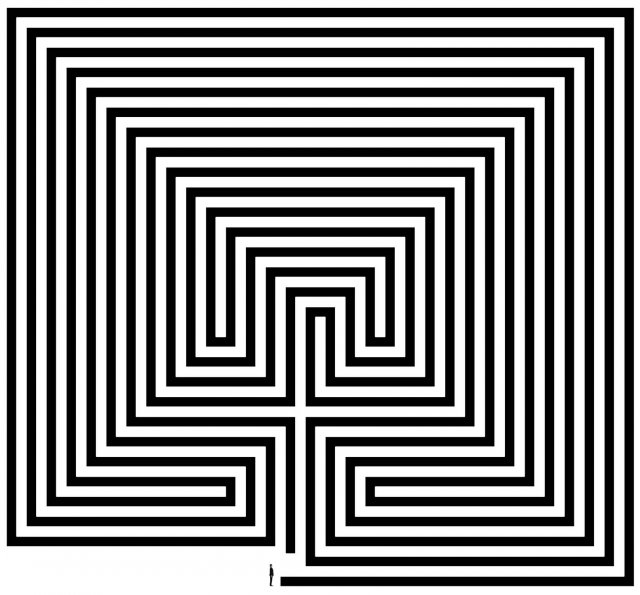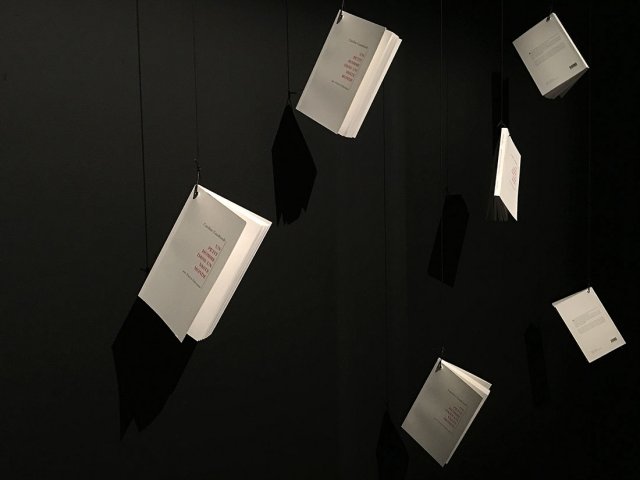The Exhibition
Man invents an unreality for himself in order to survive the real.
GÉRARD RANCINAN – CAROLINE GAUDRIAULT
Man invents an unreality for himself in order to survive the real.
The artist-photographer, Gérard Rancinan, and the author, Caroline Gaudriault, replied to the Submarine Base’s invitation by giving meaning to this place of memory, the primary function of which has been changed. They propose a journey through a selection of their works and projects in which the real and the unreal confront one another at every step. The issue at hand is our perception of a society, of a photograph, of the meaning of a word. They address this question from a poetic point of view by calling upon childhood, the past, emotion, and memory, upon everything that fashions the reality of the present. They also address it from an essentially political perspective by evoking the misappropriation of the real, the voluntary transposition of iconography, and the transformation of language and sound.
This journey includes installations, photographs, texts, videos, sonic recordings and a film.
These various approaches converge on a permanent questioning of our realities, realities that fashion a society built on fantasies and illusions by which it is urgent not to be duped.
***
The journey begins with basins emptied of their submarines, in the chaos of the world.
Like an Opera of the Unreal, the memory of what came before resonates in this place, where the sound of bombs is combined with the divine voice of Maria Callas. The Party’s Over, a monumental photographic work on canvas, spares us nothing of brutal reality and the sweet paradises of our imagination.
The first alcoves stamped with traces of the past are full of our reminiscences. What is unforgettable? What selection is to be made between collective and individual history? An artist’s journey begins at the point to which he has been led by the dreams of which he is made.
Fragments of The Trilogy of the Moderns (2007-2012) speak of the devotees of Modernity, who attempt, in their quest to reinvent the present, to wipe out all heritage, adjudging it to be too heavy to bear. Through impertinence and humour, eschewing moral judgment and peremptory exposition, the Trilogy mocks the excesses of new pecuniary mythologies, ridicules illusions that have become deadly and dictatorial, and derides social schizophrenia. The virtual is totally accepted in contemporary society, but does it always create dreams?
The Destiny of Men (2015) speaks of the human vocation to imitate the angels, to surpass, sublimate and transcend ourselves. If Men are the only creatures equipped with so much imagination, they use it with genius to conceive inventions worthy of their creativity. This is where the struggle starts, a struggle internal but eternal. Light coexists with darkness; creation is juxtaposed to self-destruction. No Man escapes his nature, whether beneficent or nefarious.
Portraits of artists (1972-2016) appeals to the notion of performance to present those individuals who project themselves most frequently into the world’s abstraction through the voluntary creative act of becoming not just men and women, but cultural references. Iconographic representation becomes as important as the work created, giving these artists an eternal status.
A Small Man in a Big World (2013-2014) plunges miniscule Man into the invariable geometry of the world. New biological and nanotechnological territories open up before him. His very identity is called into question by his political and ethical choices, his promethean, transhumanist desires. Sometimes it is more difficult for him to ask the right questions than to find instant answers. Will, when his identity is confronted by the world’s virtuality, always have the independence of mind to ask what reality is ?
We have created libraries in which the artist places his photographic encounters, like kisses stolen from history. The real stories of great personages have given way to iconographic fantasies. They have gone beyond the shores of oblivion and reached those of eternity.
Only the instant is real; the past is subject to the deformation of memory. The last recess represents the present instant. In this “reconstituted office” of the artist and the author, a sort of gallimaufry of their ideas, we find a collection of items that have influenced their lives and itineraries, serving as source material for their uninterrupted conversation about the state of the world. It speaks of inspiration as an immaterial gift of thought, with its fragility, lived experiences, ideas, beliefs and encounters. This is what they pin to the wall: everything that gives meaning to their work.
The journey continues with an installation about sonic memories of the past.


